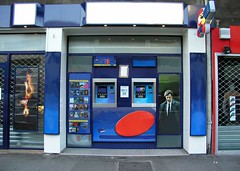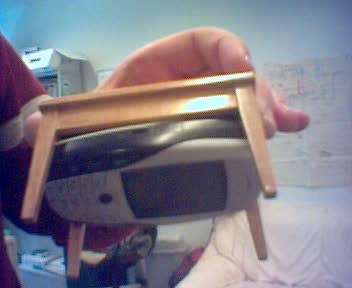Another interesting discussion on the IGDA Mobile forum about how engage user paying for location-based games.Some people think it's not good since it's just reshaping existing games in the real world:
Joe schmo does not want to dress up like a fairy and run around his local apt. complex squawking at their cell phone. it just reminds me of kids jumping around and pointing invisible finger guns at each other. plus, it seems like some idiot will be hit by a car or cause an accident by doing this.
Maybe the guy who said this as a strong bias and think mobile game should be just like pc/console games. It would be better to think about how they can design innovative stuff taking advantage of the news technosocial situations created by the use of mobiles devices. Other persons tell this guy that are already strong sucesses liek MogiMogi, Dodgeball or Pacmanhatan.
There is also a liverly debate about location based gaming as defeating the value purpose of mobility:
I completely disagree. Is it the same as me being able to play 5 minutes of Ghost Recon while in line at the store? No, but that is the point. Does this short-area networking entrance (e.g. blue tooth, IR, etc.) meet the needs of ALL gamers? No, again part of the point.
I for one like to play paintball a couple of times a year and laser-tag when in Japan with work. As I live in downtown Chicago, I have to drive at least an hour outside of the city to find suitable facilities/land to play. If people tried playing either paintball or laser-tag in the city parks, the cops would surround the park and things might not be so fun. Enter LBG such as GunSlingers currently available through Sing-tel... Now, people can play virtual paintball wherever they want.
If you combine the idea existing ideas of LBG with short-area networking, additional possibilities arise.
Some concerns expressed by the game designers are also interesting to take into account:
A. Movement is mostly not designed as possibility but as necessity. B. Location Based Games can not simply be consumed. They constantly need the player’s action to entertain. C. Location Based Games often only make fun if there is a critical mass of players. D. A background story is almost nonrepresentational in the real world environment. In best case it fits in small well prepared local areas. So players must be willing to except a high level of abstraction.
Go check this debate ;)








 The interface is pretty rough on the website screenshots, here is an example of how the radar displays the haunted areas:
The interface is pretty rough on the website screenshots, here is an example of how the radar displays the haunted areas:

 There seems to be a collaborative cartography project as well: the website depicts
There seems to be a collaborative cartography project as well: the website depicts 
 Now let's spread it and study how people use this application?
Now let's spread it and study how people use this application?